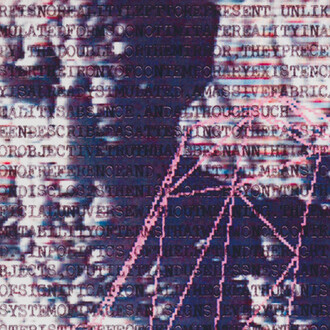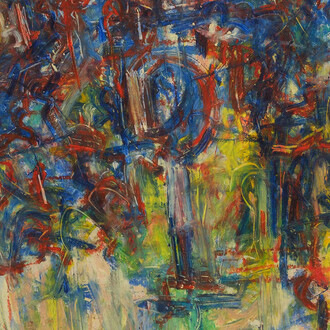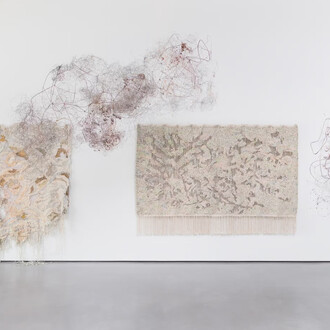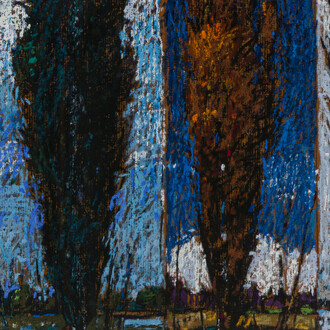Resistance and reimagination brings together seven exceptional painters who understand the subtle, often invisible modes of resistance that reside within the structures of visual language, challenging us to reconsider the role of image-making—not only in political discourse but in everyday acts of self-expression. Through the work of Sascha Braunig, Melissa Brown, Becky Kolsrud, Danica Lundy, Josephine Meckseper, Ebecho Muslimova, and Julia Wachtel, this exhibition explores how contemporary painting, at times infused with the playful intensity of graphic and animated forms, becomes a tool for reflection and reinvention.
Conceptually central to this exhibition and its participants is the iconography of cartooning–a form of visual expression which has become all but anodyne–and its reclamation as a tool of subversion in the visual space. The principles of cartooning such as symbolism, exaggeration, and distortion are visible in the work of Sascha Braunig, Melissa Brown, Ebecho Muslimova, and Julia Wachtel. These artists address questions of shifting identity while questioning societal norms to expand the boundaries by which painting offers an insight into our world at large. Present in the work of Julia Wachtel is the language of consumer culture and a criticality of commercial display to expose the political and aesthetic systems that shape public consciousness. In the work of Josephine Meckseper are apparent reimagined historical undercurrents. Through her use of book pages, cut-out shapes, and window frames, she both engages with and subverts the discourse of the readymade and the collage, simultaneously exposing and encasing cultural signifiers and everyday objects.
In the exhibition, various methods of layering—including the physical process of printing and the use of the Ben-Day dot patterns—affect legibility, perhaps in reference to the dissolving of truth in media and a breakdown in sociological realities and shared culture. Through mirroring, silhouette, surreal environments, and repetition, the artists subvert traditional expectations of both painting and visual culture. Their work, however, does not rely on overt political messaging, but instead appropriates and reimagines these visual structures to question societal norms, reveal hidden tensions, and explore the fluidity of identity in a rapidly shifting cultural landscape. These forms are either exposed or obscured by complex compositions such as by the boundary of Becky Kolsrud’s storefront security gate; at other points a window or a mirror focuses the viewer’s gaze.
Fragments of the body and the absence of the body appear alongside recognizable tropes of the female form: a diamond ring on a manicured hand, disembodied legs with pointed toes in stocking tights, wigs on mannequin heads posed akin to busts from antiquity, and a slender spine draped in silken fabric. In some cases, the painter’s focus is on a certain performance of gender, and the constraints that performance might create. In others, the focus is on the disruption of those boundaries. Consumer culture and the way these tropes are framed within it is often front and center in these works, but the focus remains on the bodies pictured and the way their agency is expressed and/or limited. The artists fracture and reframe the bodies they represent to assert their own agency and resist easy categorization of the feminine.
Entwining familiar visual modes with essences of the uncanny, the artists nudge the viewer to experience a distinct subject position through identification with the figures and characters in their images. While Julia Wachtel positions a wooden Uncle Sam (commonly known as a national personification of the United States) with a stock image of children experiencing their reflections stretched and illegible in a funhouse mirror, the figures in Danica Lundy’s cashier transaction meld together in ways unpredictable and discomfiting. Utilizing these compositional tools, these artists are building on a figurative precedent which locates the body as a site of experimentation, and which can be used to negotiate power dynamics, personal agency, and collective identity.
















